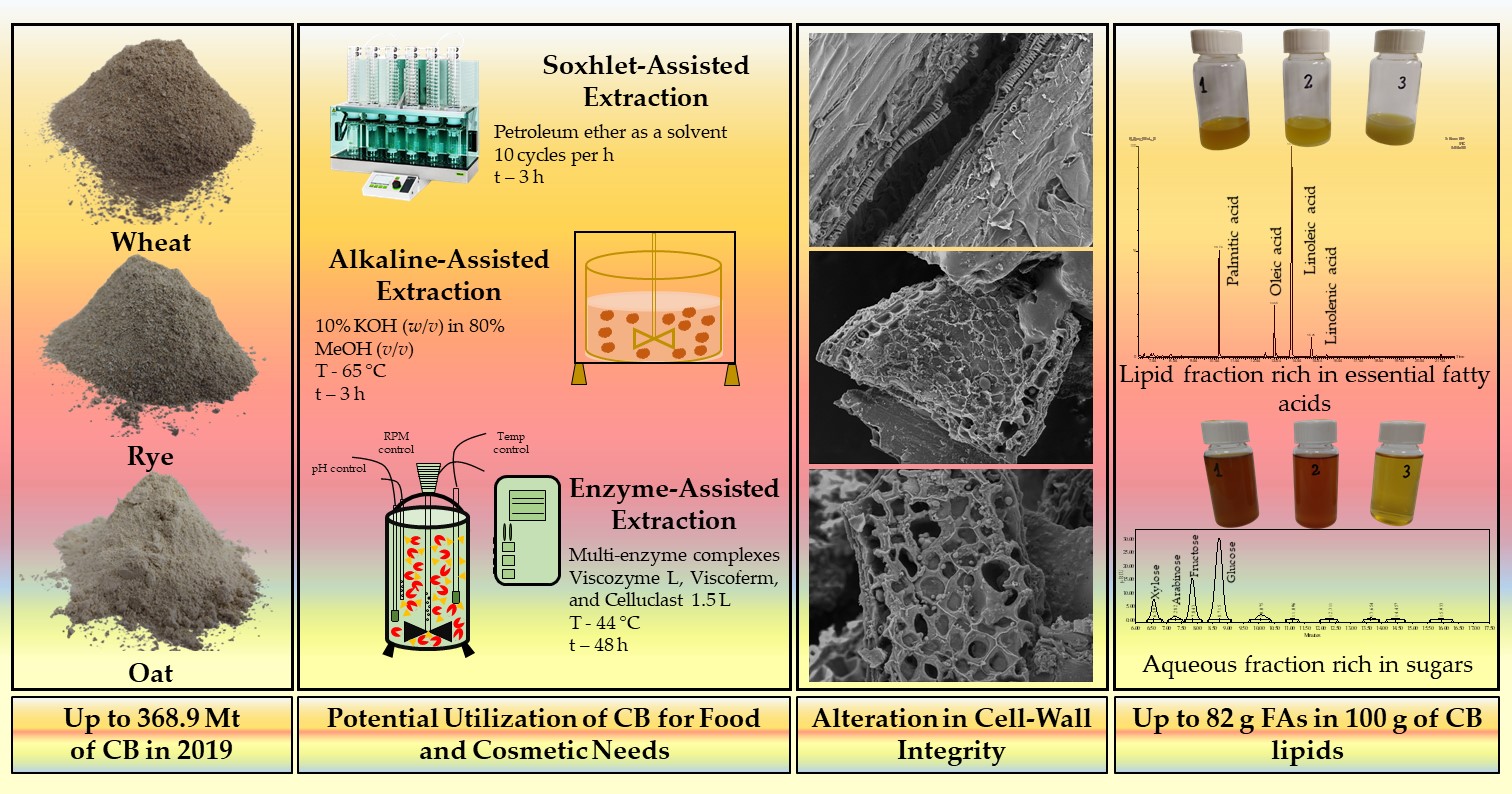The main intention of the present work was to investigate the ability of cellulose-degrading enzymes (C-DE) to release fatty acids (FAs) from complex matrices of cereal by-products during enzymatic hydrolysis (EH). For this purpose, three types of cereal bran (CB), i.e., wheat, rye, and oat were used as a lignocellulose substrate for three commercially available hydrolytic enzymes, i.e., Viscozyme L, Viscoferm, and Celluclast 1.5 L. The yield and composition of FAs after EH was assessed and confronted with the yield obtained after either conventional Soxhlet extraction or alkaline-assisted hydrolysis (A-AH) with 10% KOH in 80% MeOH and subsequent liquid-liquid extraction. The experimental results demonstrated that up to 6.3% and 43.7% higher total FAs yield can be achieved within EH of rye bran using Celluclast 1.5 L than by A-AH and Soxhlet extraction, respectively. However, the application of Viscoferm for EH of wheat bran ensured up to 7.7% and 13.4% higher total FAs yield than A-AH and Soxhlet extraction, respectively. The concentration of essential linolenic acid (C18:3) in lipids extracted after EH of rye bran with Celluclast 1.5 L was up to 24.4% and 57.0% higher than in lipids recovered by A-AH and Soxhlet extraction, respectively. In turn, the highest content of linolenic in wheat bran lipids was observed after EH with Viscoferm and Viscozyme L, ensuring 17.0 and 13.6% higher yield than after A-AH, respectively. SEM analysis confirmed substantial degradation of CB matrix promoted by the ability of C-DE to act specifically on 1,4-β-D-glycosidic bonds in cellulose and on 1,2-α-,1,3-α-, and 1,5-α-L- arabinofuranoside and 1,4-β-D-xylosidic bonds in arabinoxylans, arabinans, and other arabinose-containing hemicelluloses. Structural alteration in cells integrity greatly contributed to the release of bound FAs and their better transfer into the extraction solvent. It has been shown that the proposed process of EH can be used for the efficient release of FAs from the CB matrix more sustainably and with a safer profile, thereby representing the further sustainable production of FAs for certain purposes.

